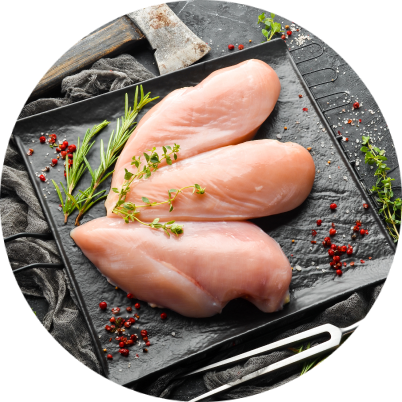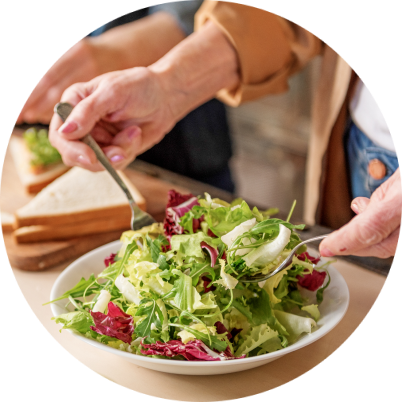CHICKEN


Almost a century of genetic development of chickens to improve their meat quality (around 200 generations) has also resulted in their increasing adaptation to farming conditions. Today's broiler chickens tolerate housing very well, where they are provided with conditions adapted to their physiological needs, ensuring their welfare and complying with the provisions of European Union law in this respect. Chickens are fed with a complete mixture of balanced nutrients adapted to their age. Ventilation systems in the poultry houses provide fresh air and remove carbon dioxide and ammonia emitted by the birds and their droppings. The poultry housing density, reduced by EU regulations, allows the birds to move freely and have constant access to water and feed. The lighting programmes used in the poultry houses are close to the natural daily cycle (day-night).

All chicken farms, as well as feed factories, are under close veterinary monitoring to exclude the use of unauthorised substances, including antibiotic growth stimulants, in their feed. Optimal housing conditions and nutrition, as well as the natural dietary supplements used on farms, significantly increase the efficiency of the immune system and the resistance of the birds, which reduces the occurrence of health disorders and the use of medicines. Poultry slaughterhouses also monitor their contractors' farms and assess the welfare of the birds.
Poultry meat production is the least environmentally burdensome compared to the production of other foods of animal origin. It leaves the smallest carbon footprint per kilogram of edible protein and emits the least amount of nitrogen (including particularly troublesome ammonia) into the environment. Consequently, poultry meat production can be considered sustainable.

Meat of Polish chickens is a high quality product. It is produced in accordance with the principle "from farm to fork", which makes it possible to analyse and identify in detail each stage of farming, slaughter and post-slaughter processing as well as marketing.The relatively late slaughter age of the chickens (usually at 42-43 days), ensures a higher dry matter and protein content in the meat and improves its sensory quality. Properly balanced nutrition limits (reduces) the fat content and therefore the calorific value of the meat.

Chicken meat, classified as the so-called "white meat", has been used as human food for millennia. It is recommended by specialised scientific centres and the WHO as part of the so-called healthy human diet. The high content of complete protein and low calorific value is particularly important for contemporary consumers. The fat contained in chicken meat in small amounts is characterised by a highly desirable fatty acid profile and a high content of essential unsaturated fatty acids. The beneficial effect of such a fatty acid profile on the consumers' health can be seen, among other things, in the effect on the desirable cholesterol fraction ratio. Chicken meat is rich in easily digestible minerals, mainly magnesium, phosphorus, potassium and zinc. So instead of supplementing the daily diet with these elements, let's use the natural source.
